Hiroaki Yamane
Name Your Colour For the Task: Artificially Discover Colour Naming via Colour Quantisation Transformer
Dec 07, 2022Abstract:The long-standing theory that a colour-naming system evolves under the dual pressure of efficient communication and perceptual mechanism is supported by more and more linguistic studies including the analysis of four decades' diachronic data from the Nafaanra language. This inspires us to explore whether artificial intelligence could evolve and discover a similar colour-naming system via optimising the communication efficiency represented by high-level recognition performance. Here, we propose a novel colour quantisation transformer, CQFormer, that quantises colour space while maintaining the accuracy of machine recognition on the quantised images. Given an RGB image, Annotation Branch maps it into an index map before generating the quantised image with a colour palette, meanwhile the Palette Branch utilises a key-point detection way to find proper colours in palette among whole colour space. By interacting with colour annotation, CQFormer is able to balance both the machine vision accuracy and colour perceptual structure such as distinct and stable colour distribution for discovered colour system. Very interestingly, we even observe the consistent evolution pattern between our artificial colour system and basic colour terms across human languages. Besides, our colour quantisation method also offers an efficient quantisation method that effectively compresses the image storage while maintaining a high performance in high-level recognition tasks such as classification and detection. Extensive experiments demonstrate the superior performance of our method with extremely low bit-rate colours. We will release the source code soon.
Computational Storytelling and Emotions: A Survey
May 23, 2022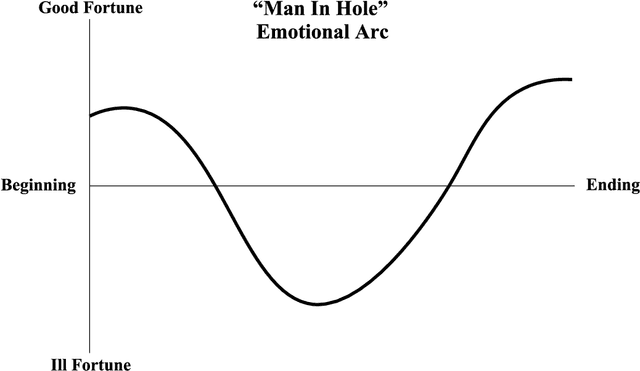
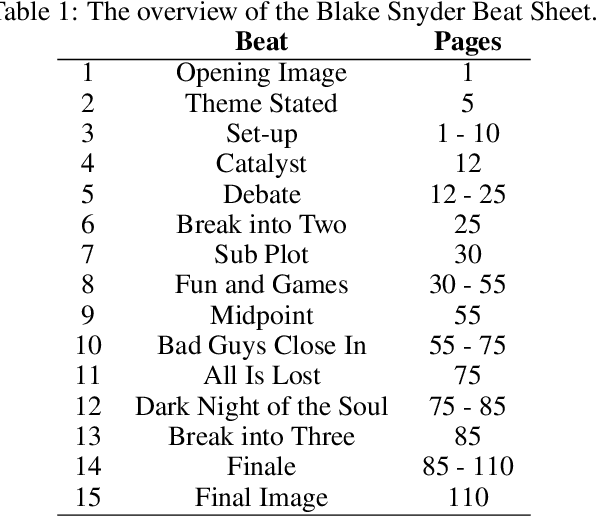
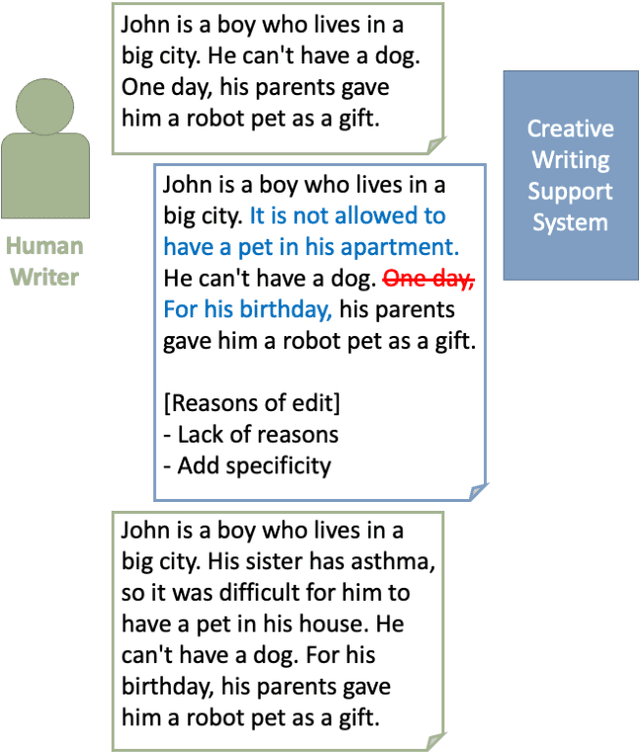
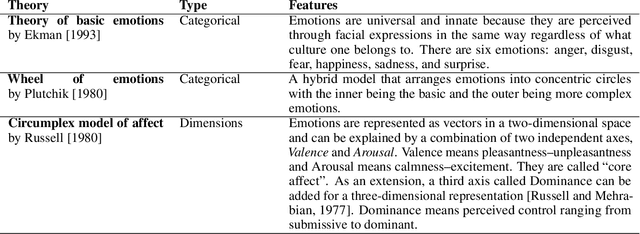
Abstract:Storytelling has always been vital for human nature. From ancient times, humans have used stories for several objectives including entertainment, advertisement, and education. Various analyses have been conducted by researchers and creators to determine the way of producing good stories. The deep relationship between stories and emotions is a prime example. With the advancement in deep learning technology, computers are expected to understand and generate stories. This survey paper is intended to summarize and further contribute to the development of research being conducted on the relationship between stories and emotions. We believe creativity research is not to replace humans with computers, but to find a way of collaboration between humans and computers to enhance the creativity. With the intention of creating a new intersection between computational storytelling research and human creative writing, we introduced creative techniques used by professional storytellers.
COMPASS: a Creative Support System that Alerts Novelists to the Unnoticed Missing Contents
Feb 26, 2022



Abstract:When humans write, they may unintentionally omit some information. Complementing the omitted information using a computer is helpful in providing writing support. Recently, in the field of story understanding and generation, story completion (SC) was proposed to generate the missing parts of an incomplete story. Although its applicability is limited because it requires that the user have prior knowledge of the missing part of a story, missing position prediction (MPP) can be used to compensate for this problem. MPP aims to predict the position of the missing part, but the prerequisite knowledge that "one sentence is missing" is still required. In this study, we propose Variable Number MPP (VN-MPP), a new MPP task that removes this restriction; that is, the task to predict multiple missing sentences or to judge whether there are no missing sentences in the first place. We also propose two methods for this new MPP task. Furthermore, based on the novel task and methods, we developed a creative writing support system, COMPASS. The results of a user experiment involving professional creators who write texts in Japanese confirm the efficacy and utility of the developed system.
Plaque segmentation via masking of the artery wall
Jan 26, 2022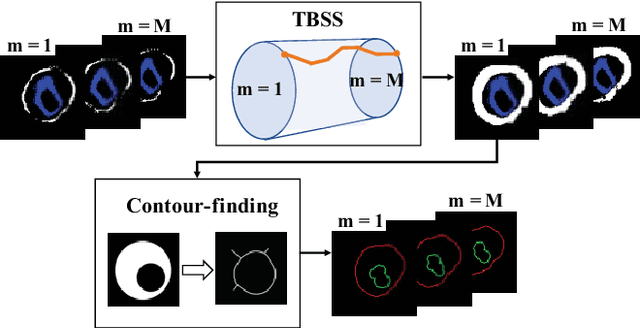
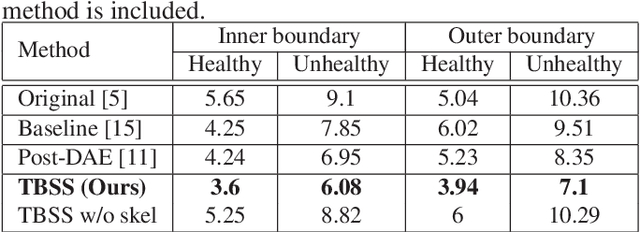

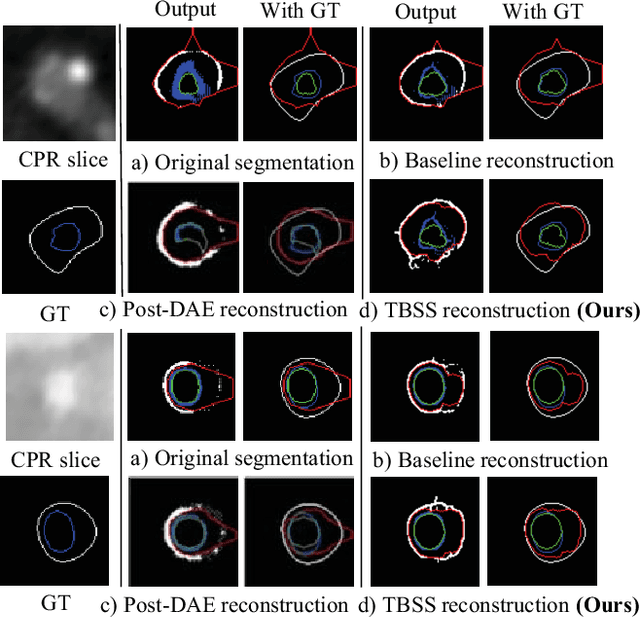
Abstract:The presence of plaques in the coronary arteries are a major risk to the patients' life. In particular, non-calcified plaques pose a great challenge, as they are harder to detect and more likely to rupture than calcified plaques. While current deep learning techniques allow precise segmentation of regular images, the performance in medical images is still low, caused mostly by blurriness and ambiguous voxel intensities of unrelated parts that fall on the same range. In this paper, we propose a novel methodology for segmenting calcified and non-calcified plaques in CCTA-CPR scans of coronary arteries. The input slices are masked so only the voxels within the wall vessel are considered for segmentation. We also provide an exhaustive evaluation by applying different types of masks, in order to validate the potential of vessel masking for plaque segmentation. Our methodology results in a prominent boost in segmentation performance, in both quantitative and qualitative evaluation, achieving accurate plaque shapes even for the challenging non-calcified plaques. We believe our findings can lead the future research for high-performance plaque segmentation.
Coronary Wall Segmentation in CCTA Scans via a Hybrid Net with Contours Regularization
Feb 27, 2020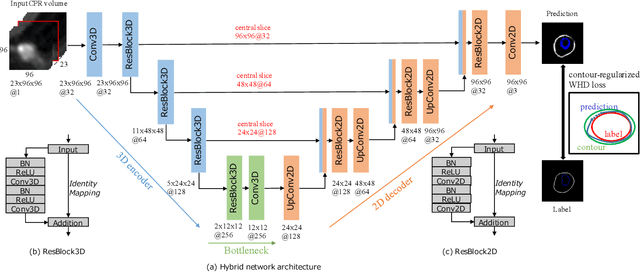
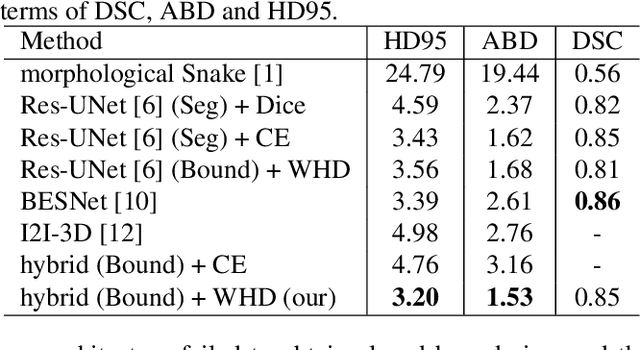

Abstract:Providing closed and well-connected boundaries of coronary artery is essential to assist cardiologists in the diagnosis of coronary artery disease (CAD). Recently, several deep learning-based methods have been proposed for boundary detection and segmentation in a medical image. However, when applied to coronary wall detection, they tend to produce disconnected and inaccurate boundaries. In this paper, we propose a novel boundary detection method for coronary arteries that focuses on the continuity and connectivity of the boundaries. In order to model the spatial continuity of consecutive images, our hybrid architecture takes a volume (i.e., a segment of the coronary artery) as input and detects the boundary of the target slice (i.e., the central slice of the segment). Then, to ensure closed boundaries, we propose a contour-constrained weighted Hausdorff distance loss. We evaluate our method on a dataset of 34 patients of coronary CT angiography scans with curved planar reconstruction (CCTA-CPR) of the arteries (i.e., cross-sections). Experiment results show that our method can produce smooth closed boundaries outperforming the state-of-the-art accuracy.
 Add to Chrome
Add to Chrome Add to Firefox
Add to Firefox Add to Edge
Add to Edge